Learning In The Time Of COVID
What has happened to learning in the era of COVID-19? The pandemic is widening the educational gap between the most well off kids and the least; meanwhile record numbers of adults are being made redundant, and face a transformed world of work. In this episode: the people living through this, the psychological consequences, and what the government and higher education are going to do about it. Plus - is reopening schools going to cause another coronavirus outbreak? What did the WHO learn when they went to Wuhan? And the carnage from the last time the Earth’s magnetic poles reversed...
In this episode
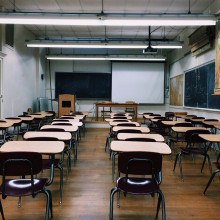
01:02 - Reopening schools may cause COVID spike
Reopening schools may cause COVID spike
Deepti Gurdasani, Queen Mary University of London
How much of a pandemic risk is reopening schools? With the UK making plans to do so on 8th March, two new studies have tried to answer this question. Both are preprints, so haven’t yet been peer-reviewed; one is from the London School of Hygiene and Tropical Medicine, the other is from the University of Warwick; and they reach almost opposite conclusions. Phil Sansom asked epidemiologist Deepti Gurdasani - who’s independent of both studies - to take a look, starting with the one from the London School of Hygiene and Tropical Medicine…
Deepti - What the study showed was that if schools were opened, we would very likely, in most scenarios, see the pandemic go from shrinking to starting growing again, and cases start growing exponentially like we've seen before.
Phil - What assumptions have they made going into this model, to make this prediction?
Deepti - The assumptions made are about how likely a child is to get infection when exposed compared to an adult. That's what we refer to as susceptibility. And it assumes a susceptibility of between 30% - which means a child is much less likely than an adult to get infection when exposed - compared to equal susceptibility, which is 100%. Irrespective of the assumptions made, what we find in almost all scenarios is that R would rise above one. The study also states that the results may depend on how dominant the new variant is in different parts of England.
Phil - Right, so what are we to make of this? Is opening schools going to put us back in outbreak city?
Deepti - I think it's very likely. I mean, it's not just evidence from this model. If we look at the real world evidence from England: if we go back to November, when we had a national lockdown and schools were open, areas where the new variant was dominant - which is I guess, comparable data to now, because the variant is dominant across the UK - R rates in those places were higher than one, despite a national lockdown. There's no reason to think that if we open schools in exactly the same way as they were open at that point in time, with a new variant circulating, the results would be any different, unless we make sure that we open them in a different way,
Phil - This sort of contrasts to the other preprint that we have to look at, which is from Warwick. And they seem to say something different. What are they saying?
Deepti - They're looking at the rates of absenteeism - when children are absent from school because of COVID-19. And it's looking at the rates over autumn and winter last year, and trying to correlate that rate with when community transmission rises.
Phil - So they're using the real figures of how many kids were absent around October/November, and they say, "we conclude that there is not significant evidence to suggest that schools are playing a significant role in driving spread in the community." Where are they getting that from?
Deepti - They didn't find evidence that, for example, absenteeism rates rose before there were rises in infection in the community, which was interpreted as, "no strong evidence to suggest that schools were contributing to community transmission".
Phil - What are we to make of this then? Especially because the other preprint, they said if you open schools we're going to get a bunch of new infections.
Deepti - Yes. I think the problem is that studies that look at absenteeism as a proxy for infection are problematic. Most children who develop infection are actually asymptomatic. They don't develop symptoms. And that means that they're very unlikely to become absent. We actually have very good studies now in the UK that don't suffer from these flaws. They are on random surveys of the population, which means that they include children who are asymptomatic as well as children who are symptomatic.
Phil - What data is this? Where are we getting this?
Deepti - The Office for National Statistics household survey data clearly show that children contribute to transmission. Primary school children were two times as likely as adults, and secondary school children was seven times more likely than adults, to be the first person in a household infected. Once infected, both those groups were two times more likely to transmit to household members compared to adults. And that shows that children have played a very important role in transmission.
Phil - Kids are really struggling. Is there any way to do this right?
Deepti - Yes, absolutely. I mean, the impact of school closures on children is huge. Our current policy in schools is actually completely out of line with the evidence on aerosol transmission. The CDC actually recommends using masks in secondary schools, but also encouraged in primary schools, particularly in high transmission areas. This is something that's being done in many parts of the world. In France and Spain, for example, all children six years and above wear masks in schools. The second area that hasn't received much attention in the UK is ventilation. While there have been guidelines to, for example, open windows and doors to improve ventilation settings - which definitely does help - there's not been any formal attention to this like there has been other countries like Germany. We know, for example, that filtration devices and air purifiers can really reduce the amount of aerosol in a classroom; and monitoring devices like carbon dioxide monitors can help us assess whether we're reaching the level of ventilation that we really need to keep people safe in those environments. The other issue we have in schools, particularly in England, is the class sizes are actually one of the largest ones in Europe. In many schools, bubble sizes reach to the hundreds. But to reduce this, of course we need more resources; so we need more staff, larger spaces... I'm really worried that them reopening without those safety measures in place will lead to a rise in R above 1, which means we may actually have to go into another lockdown and close schools again, which I think would be devastating.
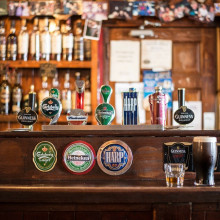
06:53 - COVID & pubs: rules often get ignored
COVID & pubs: rules often get ignored
Niamh Fitzgerald, University of Stirling
Lots of people in locked-down countries are desperately looking forward to sharing a pint at the pub again. Clearly, when this becomes possible, it will involve safety measures to reduce transmission; but will we even pay attention? Researchers from Scotland have published a study that finds problems, unsurprisingly, where alcohol is involved. Martin Khechara spoke to Niamh Fitzgerald about the research...
Niamh - We went in 29 licensed premises and spent a couple of hours in each one, observing the behaviour of customers and staff, and how the new measures that were introduced by the government were operating in practice. Despite significant efforts from the operators of bars and pubs, there were risks of COVID-19 transmission tha still existed in a substantial minority of premises.
Martin - You actually went into these places to observe what was going on... were the people there undercover or something like that?
Niamh - They were just acting as normal customers. We had pairs of people going into each premises, they were part of the same household; and they had a drink, ordered some food if there was food available, and spent a couple of hours there. And while they were there, they were just keeping their eyes open for: what was the layout of the premises and the distancing, and how did customers and staff behave. They made notes on their mobile phones while they were in there and they wrote up their reports, and in particular, the stories of any incidents they saw where there was potential risk of transmission.
Martin - What did you actually find out?
Niamh - Most premises had made substantial changes to the layout of their premises when they reopened. They also had new signage in place in a lot of premises, and there were hand sanitising stations available. But we also find that in most premises, it was difficult to avoid having pinch points: narrow areas at entrances, or in corridors, or in toilets, where it was hard for customers to avoid passing close by other customers. There were more serious incidents in quite a substantial minority of premises, where customers were embracing or mixing with other tables; they were interacting with staff for prolonged periods. It'd be easy to paint this study as being a very small sample size and that we were looking for problems, but actually that's really not the case. And it just, I think, shows what other people are saying: it's not really very surprising that when people are drinking, alcohol makes them less likely to want to comply with guidance, and also makes it more difficult for them to comply, because it affects their judgment, and their hearing, and so on. So what we would conclude is that even though there was clearly a desire on the part of operators to operate safely, that was challenging to do as everybody tried to adjust to this new guidance and the new environment.
Martin - I think the big question is: can pubs ever actually be safe? Should they even reopen?
Niamh - I mean, life is not safe. Pubs weren't safe, shops weren't safe, homes weren't safe before the pandemic. There was always a risk of catching a flu or a cold from someone. I don't think we can ever exist in a world where we're trying for everything to be a hundred percent safe, or we'd never do anything. So it's always going to be about what level of risk is acceptable. And clearly before the pandemic, it was felt that it was acceptable for us to go to pubs, and for there to be a risk that you would catch a cold or catch the flu in a pub. That was deemed to be an acceptable risk. So there will need to be a reassessment of what we're happy to live with as risk, and it's always going to be difficult, because if you try to aim for low risk or no risk, sometimes you end up with missing out on a lot of the things that people enjoy doing. It's a really difficult balance to strike, but important not to talk about things being safe, I think, because that's an unrealistic bar to set.
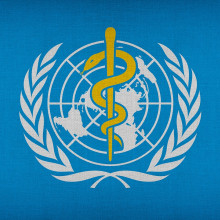
10:34 - WHO: 13 early coronavirus variants in Wuhan
WHO: 13 early coronavirus variants in Wuhan
Maureen Miller, Columbia University
The WHO team dispatched to China to investigate the origins of the coronavirus pandemic have published their results. They set out four possible scenarios to account for the emergence of Covid-19: a jump of a bat virus into humans, a jump of a bat virus into another animal and then into humans, an escape from a lab, and then - somewhat bizarrely - the possibility that frozen food imported to China brought the virus with it. They think the second one, involving an intermediate animal, is most likely. And despite significant gaps in the investigation, the team did uncover some interesting findings: by the time China’s government reported the outbreak to the WHO in January last year, there were already more than 13 different variants of the virus circulating in Wuhan. Columbia University infectious diseases epidemiologist Maureen Miller discussed the implications with Chris Smith...
Maureen - It was widespread in Wuhan in December, so likely started one month, two months earlier, even longer than that. And the spillover probably didn't happen necessarily in Wuhan; it happened where the bats are circulating that have these viruses. Anywhere along that wildlife trade route, the spillover could have occurred.
Chris - Not everyone is completely convinced by this report though, are they? Senior people in the US have said that they just don't believe it. And part of the reason why they're saying that is if you look at the itinerary for the WHO's visit, they spent less than an hour in the market, which was at the centre of all of this at the start of it; they spent just a handful of hours in the Wuhan Institute of Virology. How can they realistically form opinions and gather enough data to make a sound judgment with such a whistle-stop tour, and with their visit being completely marshalled and controlled by Chinese authorities?
Maureen - I think a lot of information was not shared. And even the information that was shared, there was no connecting of the dots by the WHO scientists. 13 different strains were found in Wuhan in December. That suggests that there was so much transmission going on, that they likely have done research and they have not shared those results.
Chris - Yes, indeed, because I understand that the team requested blood samples; they also requested stored sewage samples from the Chinese authorities, which were backdated; and these sorts of samples are kept. I mean, I help to run a virology laboratory; we keep samples for up to 10 years in freezers, especially if we've got cases we're uncertain about. The Chinese authorities say that samples that have been requested have mysteriously disappeared, and have refused to provide them. That doesn't sound like transparency to me.
Maureen - Absolutely not. And I agree with you, there are probably lots of samples around the country that could be helpful. There are several large AIDS hospitals that collect samples forever.
Chris - So why are they not volunteering them then? They're not really helping their case, are they?
Maureen - They are not. What we can hold against China is everything they've done since after they discovered the virus. They were late in reporting; they did share the sequence, and there was one or two studies published in February; and since then, radio silence. There's nothing. It's going to be hard enough to identify the origins of this pandemic, but they have just made it so much harder because they don't want it to be in China. Yet the probability is enormous that it originated in China.
Chris - But the Chinese could be proactive now, couldn't they? And they could say, "this has happened. We can help you, let's get together. Let's find out how this has happened." Because at the end of the day, the source is still out there. It could continue to seed viruses or variants of the virus back into the human race, and it could cause history to repeat itself all over again. And they do seem to be incredibly resistant to doing this. And it's not just this time; they did it 20 years ago with the original SARS, didn't they? So why are they doing this?
Maureen - Political reasons. Nobody wants to acknowledge that a virus that has infected over a hundred million people - that we know about - nobody wants to be responsible for that. And China in particular, as they have emerged as a political and economic powerhouse globally, this would undermine the idea that they're in charge of their own destiny. I think it's foolish because I think in the long run, people would understand that they were not responsible for the spillover, but they will hold it against China until they come clean and provide some data and information. I'm sure they have a lot more information than they're willing to share, which is how they can be so selective in choosing what they share. I mean, frankly, I'm surprised that they got as much data as they did on this trip. The 13 variants that were in Wuhan in December: it doesn't take much to connect those dots. It had been circulating widely. So they've admitted publicly that it was circulating widely in Wuhan in December. And the data suggests that it started much earlier, and it was much more widely circulating.
Chris - Why has the lab escape theory been so emphatically and promptly dismissed, given that they did spend less than half a day in that facility? And actually it does remain a plausible possibility? Because the WHO team have kept it on their list...
Maureen - Yes. Plausible, but again, extremely unlikely. They are a world-class lab, BSL-4, monitored closely and tightly to follow regulations. It is extremely unlikely that it happened. Frankly, people are terrified of the viruses they work with, so they don't want to become infected or to be the cause of infection to others.
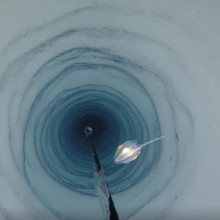
17:49 - Hidden life found beneath Antarctic ice shelf
Hidden life found beneath Antarctic ice shelf
Huw Griffiths, British Antarctic Survey
Down in Antarctica, researchers have made the rather surprising and accidental discovery of life in a place we thought it couldn’t exist. They've reported seeing animals resembling sponges, quite happily ‘chilling’ on a boulder on the sea floor, under a massive sheet of ice. Huw Griffiths from the British Antarctic Survey told Katie Haylor how it happened...
Huw - This was a total accident. The researchers who discovered this weren't even biologists, they were geologists. And they were drilling through this huge floating ice shelf to try and get at some mud from underneath. There's sort of 900 metres thick of ice and then 500 metres of seawater, and they wanted to get the mud that would be able to tell them the history of the ice shelf. Unfortunately, after doing all that work, they hit a rock instead of mud at the bottom! And luckily for us, they'd attached a video camera and they were able to spot that there was some strange life growing on it. So they brought it back to Cambridge - the video that is - and showed us.
Katie - Blimey, what are these creatures? What can you glean from the footage? What are we talking about?
Huw - We're looking at animals that are attached to the rock. There's at least four types of them, from their body shapes. And two of them we definitely think are sponges. One is kind of like a wine glass-shaped with a very long stem, and the others look like classic sponges, almost vase-shaped attached directly to the rock. Beyond that there's another couple of types of animals: one has almost a moss-type appearance to it, and we only see that when the camera actually bashes into the rock.
Katie - Isn't it quite surprising to find a rock with life in it on the seafloor?
Huw - It wouldn't be surprising to find a rock, because that can drop off the bottom of the ice shelf; this ice used to be on land that has been pushed off. This rock was 260 kilometres back from any daylight. So any animals that we normally find underneath an ice shelf are ones that can run around and go to where the food is, because obviously the further you are from daylight in the ocean, the less food you're going to get. We expected to lose filter feeding animals like these a lot further out towards the daylight.
Katie - How are they actually surviving on this rock under this ice?
Huw - We think they're getting food with some currents that circulate under the ice shelf from the open water. But unfortunately for them, the food has to go the long way, because they're currently on the outflow of the current system, not the inflow. That means the food that comes in is coming from almost 600-1000 kilometres away. So it's basically like being at the end of the line on a night bus or something, where everyone else has got off; the food is down to the kind of dregs by the time it gets to these sponges.
Katie - Oh no, poor sponges! You mentioned that you took the footage back to Cambridge, but do you think you could actually get one up to the surface to look at it more closely? Is that practical?
Huw - It's not with our current technology that we have. So we're talking about looking for life on frozen moons, and things around the universe; those kinds of technologies are probably what we're going to have to employ here, because we've got two options: we send the device from 260 kilometres away on its own under the ice, and hope that it manages to do a job without any human interference, or we put something down one of these boreholes. But these boreholes are only about a foot across, and most of our proper underwater robotics are much bigger than that. And if we try smaller ones in the Antarctic, they tend to freeze up and break within a few minutes because the water's minus two degrees. So it's about miniaturising our tech and making it more rugged, so that we can put things down that will collect a tissue sample without destroying the whole thing. Because we don't know how special this environment is; we can't destroy it by trying to pull the whole rock up, for example.
Katie - Do you have any idea if this is a one off, or if you stumbled upon something that might be a bit more prevalent?
Huw - We're talking about an area that covers one third of the Antarctic continental shelf, which is about 1.6 million square kilometres. So that's bigger than a country like South Africa. If we found one by accident, then I'm guessing there are a lot more boulders under there, and there's probably a lot more life attached to those boulders. But what sort of life that is... given we didn't expect to find these, it could be anything! Which is amazing, But also shows us there's a huge habitat that we really know nothing about.
Katie - This sounds like a pretty extreme environment to me. Do you think these sorts of life forms would be relatively unique?
Huw - Well, when we work in Antarctica anyway, if we work in sort of normal depths, about 10 to 20% of what we find is new to science. And if we go into the deep sea, it goes up to: about 80 or 90% of what we find is new to science. So if we're going to an even more extreme habitat than the deep sea, which is what this habitat is, then the likelihood is, you have to be pretty specially adapted to survive on this kind of extremely low calorie diet. And given that two ice shelves have collapsed in my lifetime, that also makes them incredibly vulnerable to things like climate change, because we may lose the entire habitat before we've even found out what lives there.
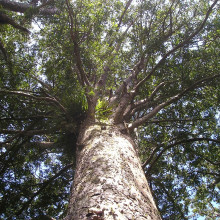
23:19 - Kauri trees reveal ancient geomagnetic chaos
Kauri trees reveal ancient geomagnetic chaos
Chris Turney, University of New South Wales
Australian scientists have dug up evidence connecting multiple massive shake ups to the prehistoric world - the extinction of the Neanderthals, the appearance of cave art, massive swings in global temperature and climate change - to a weakening of the planet’s magnetic field nearly 42,000 years ago. Adam Murphy reports...
Adam - Earth has a magnetic field. And it does more than just point your compass one way or the other; it keeps the planet safe from the sun. Without it, particles beaming in from the sun would just strip off the ozone and leave the planet vulnerable to massive doses of UV radiation. But it's not static. It changes, it weakens, and occasionally it flips all together. One such weakening happened about 42,000 years ago, and when it happened, a lot of other big things were happening as well.
Chris - Massive growth of the ice sheets over North America; shifting tropical rain belts; shifting winds over the Southern ocean; the extinction of megafauna in Australia and more arid conditions; the demise of the Neanderthals; all happening effectively at the same time. And precisely coincident just when the poles were switching.
Adam - That's Chris Turney from the University of New South Wales, who's been studying this changing in the magnetic field, which is called Laschamp event. One issue when you're looking back that far, though, is pinning down exactly when something happened. Did the magnetic field change before or after these other things? And this new research has been pinning a much more accurate date using New Zealand's plant life.
Chris - There are these beautiful, big trees; several metres across, but can live up to two millennia; they're called kauri. They've been there for millions of years. And effectively, these trees have died and fallen into peat bogs and wetlands, and then been beautifully preserved. As a result of which, these trees provide a year by year record of a climate, through the patterns of the growth rings, but they also photosynthesise the carbon from the atmosphere, and lay that down as wood. And that gives us a measure of the radioactive levels of carbon from the upper atmosphere. And during the Laschamp - during the switch from North to South and South to North over several hundred years - the magnetic field effectively collapsed almost to nothing, less than 6% of what it is today. And the practical upshot of which was the shield - protecting the air for all these high energy cosmic rays formed from supernovae - basically just was flung wide open. And as a result, what you see in the trees year by year is this huge spike in radioactive carbon which is laid down in the trees. You find this big spike, so it's really distinctive.
Adam - Because this happened 42,000 years ago, and with a love for the Hitchhiker's Guide to the Galaxy, the team have named all this, the magnetic field changes and the events that followed, the "Adams Event" after author Douglas Adams. But what would it have been like to live through?
Chris - Aurorae through the skies; lightning bolts; people were hiding out in caves... in fact we see an explosion of rock art at that time, which implies people were actually hiding away, because there would been increased UV and terrible climate changes. It must've seemed like the end of days, it must've been an extraordinary time to live from. And it would have gone on for decades. During this Laschamp period the sun's activity dropped a lot as well. And it's almost like the perfect storm, you've got a weaker magnetic field... everything's like the worst case scenario possible.
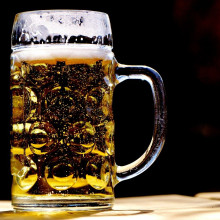
27:01 - The world's oldest beer factory, in Ancient Egypt
The world's oldest beer factory, in Ancient Egypt
Matthew Adams, New York University
Researchers at New York University and Princeton have revealed the secret of an Egyptian archaeological site from around 3000 BC. The strange collection of buildings were discovered more than a century ago near the city of Abydos, and it’s only now we know what these structures were used for. The answer… is to brew beer, in what looks to be the largest industrial brewery in ancient history! Eva Higginbotham heard from project co-director Matthew Adams…
Matthew - The overall facility covers an area of around 90 metres by about 40 or 50 metres, and it consists of 8 separate, partly buried buildings that are filled with these large pottery vats. Each one of these was used for cooking the mash - that is the grain, malt, and water - that is then fermented after cooking to make the beer. Each one of these individual buildings could cook close to 3000 litres of beer per batch, and you multiply that by 8 and you have close to 24,000 litres of beer that could be produced at a single time.
Eva - That is an unbelievably large amount of beer, even as a British person speaking here!
Matthew - Yes! A way to think about it might be it's enough beer to give every person in a 40,000 seat football stadium a pint.
Eva - Was beer particularly important to the ancient Egyptians? What relevance did beer have to them?
Matthew - Ancient Egyptians make very clear that the most important food stuffs to them were bread and beer. But in religious and ritual contexts, both of these things had added significance as offerings to, for example, sustain a dead relative in the next world.
Eva - How do you know that these vats were used for brewing beer and not for making something else?
Matthew - We're very fortunate in that our vats, and similar vats from other sites that are somewhat earlier, they frequently contain organic residues from the mash that was cooked inside. When this residue is analysed, it can be shown to contain whole and partly broken down grains; usually it's emmer wheat. The starch particles that are released from cooking the grain are also preserved - they can be seen under scanning electron microscopes. And the process of cooking that can be detected through this kind of scientific analysis is very characteristic of beer-making. It's really the same kind of process that beer makers today are using under much more controlled circumstances.
Eva - Do you reckon it would have tasted the same as a beer nowadays?
Matthew - No, there would have been similarities; but one major difference is that the ancient Egyptians did not have hops, which is a characteristic flavouring that most modern beers use - that would have been absent. So it would have been perhaps on the sweeter side compared to the more bitter modern beers. Another difference is that filtration would not have been up to modern standards, so it would have been quite cloudy probably, and also had a lot of bits of partly cooked like bread dough or something. It might've had almost a kind of runny porridge consistency. That doesn't sound very appealing from a modern perspective, but it would have been from an ancient perspective, a very hearty drink and really almost a kind of a meal unto itself. If you had a jar, they were kind of a standard size beer jar that's close to a litre, you would have had a full belly and probably also somewhat of a light head.
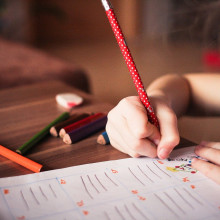
33:14 - Virtual learning: the kids weigh in
Virtual learning: the kids weigh in
Che & Oak
In the UK, schoolchildren have spent the past year moving between learning in person and learning virtually. Martin Khechara reports how two such kids are finding the situation...
Martin - I have two wonderful sons. One is 11, and he's called Che, and one who's 9 who's called Oak. Like many school-aged learners, they've been learning at home in the lockdown, so I thought I would ask them what it's like. Here's Che first, and then his brother Oak.
Che - For some reason, school is way funner when you do it on computers. But I can't play with my friends at break time. So yeah, no, there are downs and ups.
Oak - Same with Che. There's quite a lot of downs and ups. Like at the beginning of all the lockdowns, I was like, “oh, this will be cool, that means we don't have to do the long walk to school.” But now I feel like, “...oh”.
Martin - Che loves to build things and knows everything about transformers. You heard Oak too, he's the youngest, and he's an absolute genius gamer. But being indoors just isn't enough for him.
Oak - I really do miss my friends. At school we always used to have big play times outside and now we just don't have them outside. We just stay at home.
Che - Home is more funner, but when we're at school you can actually go outside. And because you have to keep concentrating when the next lesson's going to start, you can't really have the time to go outside.
Martin - For once they agree on something! And that is that they miss their friends. Here's Oak again.
Oak - I like being at school because I get to play with my friends. But home, I do get to have play times, I get to play with my own toys. I don't have to change into my school clothes as well, but also I can't do anything with my friends anymore.
Martin - The big question is, do they learn better at home or better at school? Here's Che again.
Che - In class there are a lot of distractions and a lot of noise, but at home learning, I've actually learned a lot, lot more because of the chat - nobody can speak on it and they can only type on it. And the house is silent.
Oak - I think I learn more at school because there's big representations on whiteboards and computers. So I would be like, "oh, that looks easy." But now Miss doesn't really do that much more representations and then I'm like, "I need help with it from my Mum".
Martin - I'm really proud of how my boys have been coping through the lockdown. It's such a big thing in their life for two people who are so young. I'm not worried though; I'm sure it's all going to be fine - eventually. They've both done absolutely brilliantly, but I think when we get back to school there's definitely going to be some catching up to do!
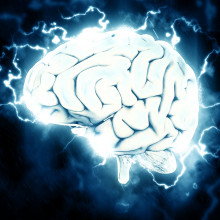
36:35 - How virtual learning affects the brain
How virtual learning affects the brain
Barbara Sahakian, Cambridge University
How does learning work in the brain? And what does learning virtually do to this process? Katie Haylor sifted through some of the psychology of home-learning with Cambridge University neuropsychologist Barbara Sahakian...
Barbara - Well, they were both very impressive young men, so I was really impressed by how articulate they were and how organised they seem to be. I think the thing is that there's two kinds of learning that children do, and one is what I call hot cognition or learning, and that's the more emotional and social learning. And then there's the cold cognition, which is non-emotional; it's more the learning of facts and that type of thing. And if you're organised, and if you like a very quiet environment, and if you are self-motivated, learning at home can be quite good. But it doesn't give you that hot social interaction that you need, especially for younger children. So here we have children of 9 and 11, but some of the younger children, of course, might've had a whole year taken out of this crucial hot development, the social cognition development, which starts at year one and goes to about year five of their life. That's very important for a building block for the cold cognition, but it also allows you to negotiate and learn how to interact with other people.
Katie - And indeed, Oak was saying that he much preferred being at school. He misses his friends and he doesn't get the same interaction.
Barbara - Well, I totally agree with that. I mean, play is very important because that's how you learn to negotiate, you know, whose turn it is... and rough and tumble play for boys and girls is very important, the sort of contact, touching and rolling around and having fun. I also feel that parents are supposed to interact with their children in a certain way, so to suddenly have to become their teacher is a rather different way of interacting with your child. And some people react to it fine, and other people find it quite difficult to concentrate, if they're getting that kind of home schooling as opposed to just sitting at a computer and passively looking at a screen where your teacher's presenting material. And again, you need very good attention to be able to focus for long periods of time while just looking at a computer screen. I think we've all experienced that when we've had Zoom calls, they're better if they're shorter than longer, because it's just hard to keep your attention when it's so two-dimensional, and you haven't got that feedback that you would normally get from people smiling at you, and talking, and laughing at your jokes, and things like that.
Katie - Absolutely, I find video conferencing really fatiguing, and it's really strange to be spending so much time looking at my own face! But anyway, kids don't all think in the same way - is there evidence to suggest which kids might be getting a particularly raw deal out of the changes that lockdown has brought around when it comes to education?
Barbara - The children that are getting a raw deal are probably the ones that have been left behind a bit, because parents can't spend as much time with them if they do need some help. Because we heard from Oak that sometimes his mum has to help him with something, so if you haven't got that extra help, that's very difficult. But also, if you're shy or if you have a neurodevelopmental delay such as autism spectrum disorder or something like that, it could make it more difficult for you to interact with the screen and the information. If you don't understand it, it might be hard to get your questions answered.
Katie - Can you offer any psychological tips for kids, teachers, parents?
Barbara - Well, what I would say is that as soon as children are allowed to have rough and tumble play, and to get together and do the things that they normally do - because they are very social animals, and they want to communicate with each other, and it's very good for their language learning - make sure you let them get out there and play with their friends, and have an opportunity to. And even now, I guess you can play some good games over Zoom, and some children respond to that quite well. And I would say exercise to; exercise is very good for children, it's good for your brain, it induces neurogenesis in important areas like the hippocampus, it's good for your mood. So if children get a bit low because they're stuck in the house, getting out there and exercising is brilliant for that. As long as it's something the child enjoys doing, that's a very good thing to do too.
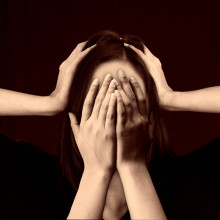
41:41 - Isolation & inequality: the gap in education
Isolation & inequality: the gap in education
Robert Halfon, Education Select Committee
Many children are struggling with the move to learning from home - and the pandemic seems to be widening the disparity between priveleged and disadvantaged kids. The experience may be affecting their social learning, particularly for young kids at a crucial stage of development. But many of these problems aren't new. Are governments going to start properly addressing them? UK MP Robert Halfon, chair of the Education Select Committee, joined Phil Sansom...
Robert - It has been nothing short of a disaster for children and young people, for the most part, over the past year. I've described it as the four horsemen of the education apocalypse, because we know there's been a huge loss of learning; mental health problems amongst young people are on the rise; there are ever increasing safeguarding hazards; and now we know from the respected Institute for Fiscal Studies that the average pupil could possibly lose around £40,000 of lost wages over their lifetime because of the effect of not being in school. So it is very serious, and that is why I've been campaigning to try and get all children back into school sooner rather than later.
Phil - Is the government perhaps too concerned with the cold part of learning that we just heard Barbara talking about, in terms of looking at exam results and exams that have been missed?
Robert - I actually agree completely with how important schools are, not just for academic learning, but socialisation, behavioural skills, teamwork, and other things. Schools nowadays are not just places of education; they're often a place where a child might get possibly the only good meal of the day. What we need to do is not just the proposed government's £1.3 billion catch up program, which is focused around academic catch-up, but perhaps extending the school day; to look at wellbeing, mental health, and sporting activities; inviting civil society into the schools, to give the children extra support and sporting activities that they've been denied over the past year.
Phil - We've been hearing from the Education Endowment Foundation, who've released a report talking about the attainment gap, which is the gap between the most and the least well-off kids. We actually spoke to head researcher, Jon Kay. Here's what he had to say.
Jon - There's a large attainment gap of pupils from disadvantaged backgrounds, a gap of around seven months. And this represents an increase on gaps prior to COVID.
Phil - And not all of this was COVID, because there was already a six month gap before, he says. So the measures that you're talking about - are they going to help narrow that gap?
Robert - We are entrenching a have and have-not society in terms of our children's learning. So of course the extra tuition program set out by the Prime Minister and Education Secretary will help. It means that tutor groups will be able to give not just online learning, but also help, teach, and support staff at school to try and ensure that these children catch up. But I will reiterate my key point: it isn't just academic catch up that they need. They need a huge amount of mental health support. Just to give you one example, we know that since the first lockdown, eating disorders amongst the younger generation have gone up by 400%. That is a harrowing figure to even think about, and that is partly due to school closures and social isolation. So I'd like to see mental health professionals, not just in some schools, but in every school across the country.
Phil - What is causing the disparities, and what are the factors behind some of these harrowing statistics that you're sharing?
Robert - In terms of academic attainment disparities, that is partly caused by the digital divide. We know that for a long time, hundreds of thousands of children didn't have access - and many still don't - to proper computers or tablets, or even a proper internet connection at home. We also know that whilst teachers and support staff have been doing everything possible to keep children learning - and we should pay tribute to them for that - there have been wide differences. And in many cases, children have had very varied experiences of remote learning. And then in terms of mental health, we know that because of children not being able to go outside, exercise, play, go to school, it has affected young people. In fact, it hasn't just affected young people; there's increasing reports of mental health problems amongst everyone. But of course, for younger children, it's much harder to deal with.
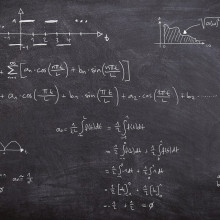
46:28 - Adults need learning, too
Adults need learning, too
Mary Mahoney, University of Wolverhampton; Robert Halfon, Education Select Committee
The pandemic has interefered with learning, but not just for schoolchildren. Learning is a big part of life for adults as well, and many people who have lost their jobs may need to retrain new skills. Mary Mahoney is head of lifelong learning at the University of Wolverhampton, and works closely with local government and institutions to promote learning in one of the most deprived areas in the UK. She told Phil Sansom what she's up against...
Mary - I think it's a really complex problem. And I think the pandemic has just simply exacerbated a problem which was there already, and one of the things we've got hung up on is qualifications. So if, as an individual, you failed at school, and your experience of school wasn't a great one, then you are less likely to want to engage in learning of any form as you go through the lifespan; you will have diminished confidence in your own ability to learn; and then you won't necessarily pass onto your own children a joy or confidence around the learning experience. So it's a multifaceted problem, and it stems from the fact that we're concentrating more on education and less on learning. It's very hard therefore to engage adults, but adults are the linchpin at the moment; they're the parents who are currently at home, homeschooling their children. And as Robert said, many, many of them... in Wolverhampton it was predicted that 35,000 people had no access, and didn't go online, in the first three months of the pandemic, and about 59,000 people didn't have any of the core basic digital skills. Not only have they got no confidence, they've got no connectivity and they've got no devices. So whilst we might fix the problems with devices and connectivity, we've got a population who isn't confident.
Phil - Mary, what's this distinction you're drawing? What's learning as opposed to education? Is it the digital skills that you're talking about, or is it more?
Mary - No, I'm talking about everything: our ability in life to access information, make sense of that, and we modify our behaviour. So learning right from that basic information stage then moves into leisure, and gives us meaning, it gives us confidence, it teaches us problem solving skills, and our ability to be less reliant on the state. And as Robert just said, it has a massive role also in our ability to reduce isolation, and be creative through being able to knit, cook banana loaf, or whatever people are doing... but to get a sense of purpose and structure in our lives.
Phil - What's your version of that, Mary? Because you're a university - what does that look like for you? Are you just making websites available?
Mary - No. In a population as disadvantaged as Wolverhampton, where you've got 17 out of 20 of the wards showing massive issues around access to services, and benefits, and capability around digital, and confidence in devices, et cetera; and you've got the third highest youth unemployment rate in September last year, in a situation that's just going to get worse; then we have to go to the root of the problem, I think, and that is to understand what blocks people from thinking they can't learn. And so for Wolverhampton, what we do is we work not just to respond, but we work together to move beyond the initial problems that COVID has exacerbated, to start to address things like the fourth industrial revolution, where we're going to need new skills, new competencies. And we also make learning fun. We take learning to the community. We take learning to theatres, where parents and children can participate. We have Children's University, where children get credits for learning. And we have learning centres in the community where people can come, drop in, find out what they need, and get the support they need. And we run learning festivals.
Phil - A whole raft of stuff, Mary. I better throw this to Robert because I'd like to hear his take. Robert, you're not a cabinet minister. You don't have a portfolio. So you sort of have the opportunity to stand a little bit outside, and look at them and criticise maybe what's going on. Are they doing the kind of things Mary thinks are so important?
Robert - Well, I think we need to do a lot more. We've got 9 million adults without proper numeracy or literacy skills. And 53% of those who've left school aged 16 have not taken part in any learning since. What I'd like to see is a lot more investment in lifelong learning. I'd like to give every adult a lifelong learning account so that they would have a credit to choose adult education. We need to re-establish adult community learning centres in almost every town. And I'd also like to give skills tax credits to businesses who’ve trained their workers, because we are falling behind many other OECD countries in terms of our adult learning. And it's just been mentioned about the fourth industrial revolution: the world is going to change! 28% of jobs currently done by younger people may be lost by 2030 because of artificial intelligence. So there's going to need to be retraining, reskilling, all the time, in order to ensure that people have the opportunities, and can adjust to the changes that the fourth industrial revolution will bring.
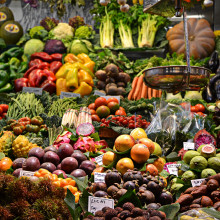
52:14 - QotW: what effect has diet had through history?
QotW: what effect has diet had through history?
Adam Murphy’s been hungry for an answer to listener James’ question…
Adam - This is a question you can really get your teeth into, right? And a difficult one to answer; you’ve to bring together nutritional science, with archeology, and all of history... which is a long time, I’m told. And things can change, as Sam Leggett from the University of Cambridge points out...
Sam - Such a great question! Depending on the time period, my answer to this question would change quite a lot actually, as what was in fashion for posh people to eat changes through time. Generally speaking, though, we know that medically speaking diet has a huge impact on health; a well-balanced diet is key to staying “healthy”, and especially so in early life when your bones and brains are developing and growing. But diet isn’t the only thing that dictates your height or intelligence – these are really complex, and diet plays a role - but a lot of this is down to your genetics and the rest of your environment. Pollution, for instance. There isn’t much evidence to suggest Roman patricians would’ve been “smarter” than plebs, but due to social privilege they were more likely to be better educated.
Adam - But what about outside of Roman times? How healthy would a medieval munch have been? Julie Dunne from the University of Bristol has some interesting insights about the negatives of an aristocrat's diet.
Julie - Allowing for shortages in times of bad weather, etc, the medieval peasant probably had a fairly healthy diet, possibly more so than the wealthier classes. Documentary sources tell us that higher status diets, such as those consumed by the lords of the manor, also relied on meat, together with poultry and fish, but probably cooked in more 'exotic' recipes, using herbs and spices. Interestingly, the aristocracy were suspicious of raw green stuffs – regarding them as unhealthy - and fruit and fresh vegetables, such as garlic, onion and leek, as being ‘poor men’s food’ or as suitable for those doing penance. More wealthy diets included quite a lot of pastries and tarts so may not have been quite as healthy!
Adam - Thanks to Julie and Sam for serving up an answer. Next time, we’re seeking out an answer to this question from Pavel.
Pavel - Take sunglasses and remove one lens. Watch a normal television film with one eye darkened by a sunglass lens, and the other free. The film will appear in 3-D. Can someone explain to me, how does this work?










Comments
Add a comment